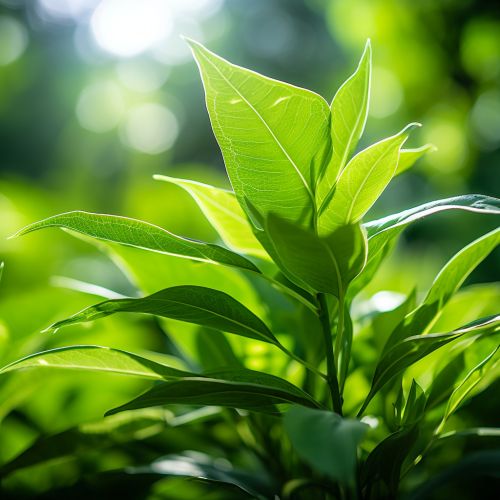Cytokinins
Introduction
Cytokinins are a class of plant growth substances (or phytohormones) that promote cell division, or cytokinesis, in plant roots and shoots. They are involved in various processes of plant growth and development, including cell division, apical dominance, and leaf senescence.


History and Discovery
Cytokinins were discovered through research into substances that promote and regulate cell division and differentiation. The first cytokinin was isolated from herring sperm DNA in the 1950s by Folke Skoog and Carlos Miller, two botanists at the University of Wisconsin-Madison. They named it kinetin because of its ability to promote cytokinesis.
Classification
Cytokinins can be classified into two main groups based on their structure: adenine-type cytokinins and phenylurea-type cytokinins. Adenine-type cytokinins, such as kinetin, zeatin, and benzyladenine, have a structure similar to that of adenine, a component of DNA and RNA. Phenylurea-type cytokinins, such as diphenylurea and thidiazuron, have a different structure and are usually synthetic.
Biosynthesis and Metabolism
Cytokinins are primarily synthesized in the root apical meristems of plants. The biosynthesis process involves the conversion of adenine to isopentenyladenine (iP), a common cytokinin, by the enzyme isopentenyl transferase. The iP is then converted to trans-zeatin, another cytokinin, by the enzyme cytokinin oxidase/dehydrogenase.
Cytokinins are metabolized and deactivated by two main processes: conjugation and degradation. Conjugation involves the attachment of a sugar molecule to the cytokinin, rendering it inactive. Degradation involves the removal of the side chain of the cytokinin by the enzyme cytokinin oxidase/dehydrogenase.
Functions
Cytokinins play a crucial role in various aspects of plant growth and development. They promote cell division and differentiation, regulate apical dominance, delay leaf senescence, and enhance nutrient mobilization.
Cell Division and Differentiation
Cytokinins promote cell division and differentiation in plant tissues. They stimulate the transition from the G2 phase to the M phase of the cell cycle, leading to cell division. They also regulate the differentiation of cells into various tissue types.
Apical Dominance
Cytokinins regulate apical dominance, a phenomenon where the main, central stem of the plant grows more strongly than the side stems. They do this by promoting the growth of lateral buds, thereby reducing the dominance of the apical bud.
Leaf Senescence
Cytokinins delay leaf senescence, the process of aging and death in leaves. They do this by inhibiting the breakdown of chlorophyll, proteins, and nucleic acids, thereby prolonging the functional lifespan of the leaf.
Nutrient Mobilization
Cytokinins enhance nutrient mobilization in plants. They promote the uptake of nutrients from the soil and their transport from the roots to the shoots.
Role in Plant Pathology
Cytokinins also play a role in plant pathology. Some plant pathogens, such as Agrobacterium tumefaciens and Pseudomonas syringae, produce cytokinins to manipulate the growth and development of the host plant to their advantage.
